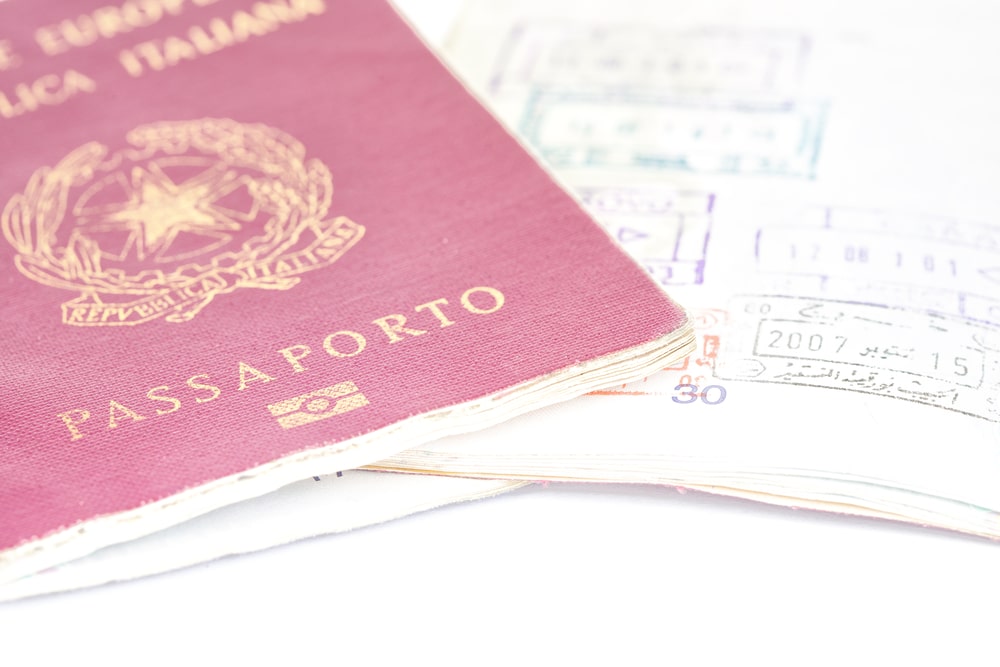How to open a bank account in Italy
Italians abroad love to come back and spend their holidays in their home country, which they also happen to call a "paradise". It's probably the only place on the planet with such a strong pull. This Mediterranean land prides itself with incredible history and it meticulously, proudly preserves existing traces of its intellectual, cultural, philosophical, and human development over millennia. Starting with architecture lovers, who come to admire the genius of Italian city planners and mastery of its craftsmen who gave the country such a splendid and graceful shape, to food lovers, flocking here to enjoy one of the finest, most exciting and satisfying cuisines on the planet, to adventurers looking to spend time on the beautiful winding roads of Calabria or exploring the lake abundant north of the country, to fashion enthusiasts and designers, car collectors, art lovers, and so the list goes on.

Italy is a popular place to live due to its unique beauties even to people on a moderate income, and if you're fine with living out of the main urban areas, the costs of living are very affordable. Add to it plenty of airports and trains, wonderful weather, and warm, welcoming people to get a better idea of the experience. The amount of expats in Italy (foreign students, professionals, retirees, investors, workers) is impressive, and therefore opening a bank account in Italy is easy also for non-residents. We've compiled a short guide on what to prepare to get your account in a short time.
Documents needed to open a bank account in Italy
No matter if you're a resident, a temporary worker, a student, a tourist or a professional traveling often for business - you have to provide the local branch of Italian bank the same set of documents as the Italians do:
- Identification, such as a valid passport, identity card, or driver’s license
- Italian tax code, called codice fiscale, as well as Certificato di Attribuzione del Codice Fiscale that comes with the tax code
- Proof of address in Italy, and enrollment on the university program for students, of residence permit or work contract
You can apply for your codice fiscale at any tax office (called Agenzia Delle Entrate), to be found in the center of most smaller and bigger cities. Usually, the office issues these numbers on the same day. It's worth reminding that office hours in Italy can be surprising to many - and differ across the country and the season. Hot summer in the south might mean more day-breaks (siesta), early openings, or late closures.
What type of bank account can you open in Italy as a resident and non-resident?
Depending on the amount of time you're planning on spending in the country, you can choose between a non-resident and resident account options. You do not need to be a citizen of Italy to be eligible to open a resident account, it is enough to live there for a substantial part of the year. What's important to remember, English is not a widespread language in Italy and you will most likely need the help of a friend who speaks Italian to help you manage the process. The documents you will sign tend to be all in Italian.Conto corrente cointestato (joint account) – this is a current account that you share with someone else.Conto Corrente (current account) – a basic account for your daily transactions, payments, and operationsAs a resident, you can select one of the main types of accounts:
- Conto di risparmio (savings account) – this is for your savings, on which you can earn a little bit more interest.
- Conto di deposito (deposit account) – this is a less flexible type of savings account that might offer a higher rate of interest

As a non-resident, you can open a basic current account called conto corrente non residenti. Opening a bank account in Italy normally requires a visit in person in one of the branches, although some of the new banks start offering internet services and online verification as well.
Open a bank account in Italy as a foreigner
Regardless of visa status and citizenship, foreigners (whether individuals or legal entities) can open a nonresident bank account (“conto non residenti” or “conto estero”). In fact, some banks regularly deal with nonresidents and have specific products and offerings intended for foreigners.
Typically, a personal visit to the Italian bank is required. But some Italian banks allow foreigners to open a bank account in Italy online. Naturally, opening an Italian bank account is much easier for a foreigner if they’re already in the country and could make it in person. But even if you are not residing in Italy, you can still open an Italian bank account by going to one of the branches of an Italian bank with operations in the country where you reside. Or you may also go to a bank in your country which has special arrangements with an Italian bank to perform AML compliance procedures for them.
Closure of a bank account
When opening your account, make sure to diligently go over your contract to be aware if the bank will charge you any fees and the level of difficulty when you decide to close the account for any reason. To do this, you are required to send a raccomandata or registered letter from the post office to the bank branch where you opened your account prior to making an appearance. For joint accounts, all the account holders will have to provide their signatures.
Opening a corporate account
For opening a corporate account, it would be wise to be aware of the banking laws - both at the national and EU level - governing them. Get familiar with Italy’s Legislative Decree 58/1998 and the Consolidated Law of Banking as well as EU’s Capital Requirements Regulations.
Best banks in Italy
Italy has a thriving banking sector with national chains, hundreds of branches, and thousands of ATMs spread around the country. Most of the accounts offer free credit or debit cards, monthly automatic utility payments, check (cheque) books. The largest banks are Unicredit, Banco di Napoli, and the Banca Nazionale del Lavoro. If you want a bank with services in English, consider Intesa Sanpaolo.
- Unicredit is the largest international bank in Italy, with offices in 17 countries. It is also highly popular with Italians and amongst the most reputable financial institutions in the country. If you open an account with them, you benefit from a service used to dealing with international clients and Italy’s largest network of ATMs. Debit cards come with most accounts too with some offering a contactless card. Only in Italian.
- Poste Italiane: Since Poste Italiane is both a bank and a national post office, you can expect to find a branch and an ATM of this bank almost everywhere in the country. You can also execute transactions and open an account at any post office. It offers products such as family accounts with a debit card for children, as well as PostePay, a series of options that combine for example mobile services with a prepaid payment card you can use online or abroad, coming in various forms - for individuals and businesses. A drawback? This bank operates mostly in Italian.
-
Banca Nazionale del Lavoro, for many the second-best bank in Italy. Their biggest selling point is a cashback/loyalty program that returns your money on certain purchases. You can select from a fee-free account (all transactions are free until you're 30 years old), a powered one with unlimited online SEPA transfers, two cash withdrawals per month in Italy and abroad, and the Classic credit card free of charge, and finally a full one, with unlimited transactions and withdrawals in Italy and abroad, and a free credit card. They also have a lot of ATMs and branches. Only in Italian.
-
CheBanca, a "Human digital bank", as they call themselves, is a large provider that offers a range of accounts and includes business deposit accounts as well as home, life and accident insurance. They also offer basic current and savings accounts, loans and investment services. You can also open an account with them online, and their services are fully digitalized, with a banking app. Their branch and ATM network is very decent.
- Intesa Sanpaolo is a very popular bank in Italy with a large network of branches and ATMs and partner networks. They have accounts for youth, students, families, and offer products such as insurance, investments, and mortgages. And they have launched a new online banking system. Only in Italian.
Before you decide on the bank, research and compare the banks available in the area where you plan to spend most time, as well as various fees and charges you might be subject to depending on the bank of your choice. Ask your banking agent for a list of fees, if you can't find them online.
Most banks will have a low fee on current accounts, free student accounts and oftentimes perks such as travel insurance. Beware of the limits on daily withdrawals - in Italy the default amount is approximately 300 Euros per day.
As it is with Italy, banks have odd business hours and these vary even by season. In the winter, a bank could only be open a few hours a week in a small enough town, for example. The same occurs for post offices which is used by Poste Italiane customers: in some cases they are only open 5 or 6 hours per week.
The virtual bank account option
International money transfers are expensive in Italy
If you need to transfer money anywhere outside Europe, you will probably think first of using a traditional bank transfer. Because banks use what is called the mid-market rate to transfer and convert money between one another, in order to cover their expenses and to profit. This can make for a big sum - for example, if you transfer 10.000 euros from Italy to India, your recipient will get around 9000 euros worth of rupees, depending on the bank you use, the currency of the transaction, and the charges this operation incurs, including exchange rates.
With a virtual bank account offered by B2B Pay, you get your own European IBAN account, which you can use to receive or send money from/to anywhere - it is especially convenient in Europe. Second, B2B Pay uses mid-market rates as a basis and only charges a flat fee of 1% of the total transaction. For the above transfer example, your recipient would get 9900 euros worth of rupees within 24-48 hours, a much faster time than in case of regular bank transfers.
Page content
About the author

Disclaimer
This publication is provided for general information purposes and does not constitute legal, tax, or other professional advice from B2B Trade Payment Services AB or its affiliates, and it is not intended as a substitute for obtaining advice from a financial advisor or any other professional.
How to open a bank account in Europe
We have comprehensive guides on opening bank accounts across multiple European countries. These resources also explain how a virtual bank account with Narvi Payments can be a smarter alternative for international transfers, offering better exchange rates and greater convenience.
-
 How to open a bank account in Andorra
How to open a bank account in Andorra -
 How to open a bank account in Austria
How to open a bank account in Austria -
 How to open a bank account in Bulgaria
How to open a bank account in Bulgaria -
 How to open a bank account in Croatia
How to open a bank account in Croatia -
 How to open a bank account in Czech Republic
How to open a bank account in Czech Republic -
 How to open a bank account in Cyprus
How to open a bank account in Cyprus -
 How to open a bank account in Denmark
How to open a bank account in Denmark -
 How to open a bank account in Estonia
How to open a bank account in Estonia -
 How to open a bank account in Finland
How to open a bank account in Finland -
 How to open a bank account in France
How to open a bank account in France -
 How to open a bank account in Germany
How to open a bank account in Germany -
 How to open a bank account in Greece
How to open a bank account in Greece -
 How to open a bank account in Hungary
How to open a bank account in Hungary -
 How to open a bank account in Ireland
How to open a bank account in Ireland -
 How to open a bank account in Italy
How to open a bank account in Italy -
 How to open a bank account in Latvia
How to open a bank account in Latvia -
 How to open a bank account in Liechtenstein
How to open a bank account in Liechtenstein
-
 How to open a bank account in Lithuania
How to open a bank account in Lithuania -
 How to open a bank account in Luxembourg
How to open a bank account in Luxembourg -
 How to open a bank account in Malta
How to open a bank account in Malta -
 How to open a bank account in Monaco
How to open a bank account in Monaco -
 How to open a bank account in the Netherlands
How to open a bank account in the Netherlands -
 How to open a bank account in Norway
How to open a bank account in Norway -
 How to open a bank account in Poland
How to open a bank account in Poland -
 How to open a bank account in Portugal
How to open a bank account in Portugal -
 How to open a bank account in Romania
How to open a bank account in Romania -
 How to open a bank account in San Marino
How to open a bank account in San Marino -
 How to open a bank account in Slovakia
How to open a bank account in Slovakia -
 How to open a bank account in Slovenia
How to open a bank account in Slovenia -
 How to open a bank account in Spain
How to open a bank account in Spain -
 How to open a bank account in Sweden
How to open a bank account in Sweden -
 How to open a bank account in Switzerland
How to open a bank account in Switzerland -
 How to open a bank account in the UK
How to open a bank account in the UK
